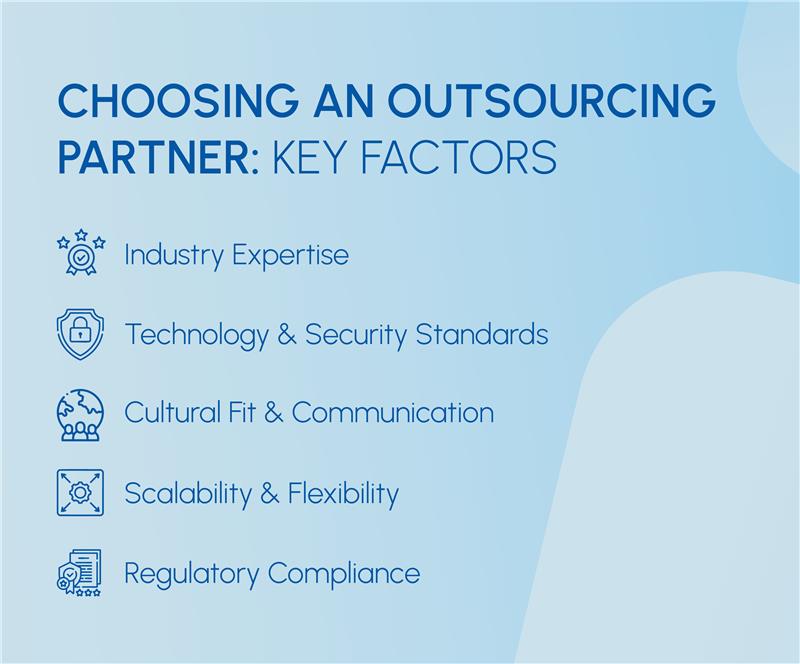Australian SMEs are currently facing intense financial pressure due to rapidly increasing labour costs. This surge is driven by a complex combination of economic shifts, regulatory changes, and persistent skills shortages within the Australian workforce. As the backbone of the economy, representing over 98% of all businesses and employing a significant portion of the population, SMEs are under immense pressure to adapt in order to maintain their competitiveness in an increasingly challenging market environment.
Offshore outsourcing to countries like the Philippines has become a smart solution for many businesses. Managed offshoring, specifically, has emerged as a powerful strategy to alleviate these hiring challenges. While once viewed primarily as a cost-cutting measure, offshore outsourcing is now recognised by Australian companies as a tool for business resilience, scalability, and operational efficiency. By tapping into global talent pools, businesses can access highly skilled professionals while easing the financial and logistical burdens of local recruitment.
But why exactly is the Australian labour market struggling, and how can offshoring bridge the gaps? Let’s break it down.
Table of contents:
Overview: What is Offshore Outsourcing

Offshore outsourcing is the practice of hiring external teams in another country to handle specific business functions. For Australian companies, this often means working with offshore teams in countries like the Philippines, where businesses can access skilled professionals at significantly lower costs. By outsourcing roles such as customer service, IT support, finance, and administration, companies can streamline operations, reduce overheads, and stay competitive in an increasingly challenging labour market.
Australian outsourcing companies specialising in Philippine outsourcing offer businesses a structured approach to offshore staffing, ensuring smooth integration with onshore teams. By choosing to outsource to the Philippines, businesses gain access to a large talent pool, cost savings, and time zone compatibility that allows for seamless collaboration. When managed strategically, offshore outsourcing doesn’t just cut costs—it strengthens business resilience and enables sustainable growth.
Why Australian Businesses Are Struggling to Find Talent

The issue in finding and retaining employees in Australia is complex. It comes from a combination of interconnected factors that extend far beyond simply offering competitive salaries. The Australian labour market is experiencing a significant skills mismatch, where the demand for specific skills far exceeds the available supply. This issue is highlighted by a report from the Committee for Economic Development of Australia (CEDA), which found that nearly a quarter of permanent skilled migrants are working in jobs that don’t fully utilise their skill level. Jobs and Skills Australia’s September 2024 report further emphasises this problem, pointing to a “suitability gap” where qualified applicants are deemed unsuitable by employers.
Adding to the challenge are the increasingly high costs associated with hiring and retaining employees. The average cost per hire is approximately $19,000, and it takes an average of 44 days to fill a vacant position. Furthermore, the Australian workforce is undergoing a shift in priorities, with many employees now placing a greater emphasis on flexible working arrangements, mental health support, and a healthy work-life balance over traditional benefits. These evolving expectations have contributed to higher employee turnover rates, averaging around 14%, leaving businesses constantly scrambling to fill vacant positions and maintain operational stability.
The geographic distribution of talent also presents a significant hurdle, particularly for businesses operating outside of major metropolitan areas. The Jobs and Skills Australia September 2024 report reveals that fill rates are noticeably lower in regional areas (62.9%) compared to metropolitan areas (69.7%), indicating that the pressure of the talent shortage is easing more quickly in urban centres. Factors such as an ageing population, leading to retirements and knowledge gaps further compound the issue, leaving businesses facing a persistent and multifaceted talent shortage.
Key Hiring Challenges for Australian Businesses
The Mounting Costs of Hiring Delays
As established, Australian businesses are now facing significant difficulties in finding and retaining skilled staff, and these challenges aren’t only a time issue, but a financial one as well. When key positions remain unfilled, it directly affects a business’s productivity, profitability and long-term growth.
One of the most significant consequences of hiring delays is lost productivity. In fact, the average cost of loss of productivity in the U.S every year amounts to $1.8 trillion. When a crucial role remains vacant, existing teams are stretched thin, taking on extra responsibilities and affecting their original workloads. This leads to operational inefficiencies as projects stall, deadlines are missed, and workflows become disrupted. Overburdened teams face burnout, leading to errors, sick leaves, and higher staff turnover. These problems may result in a business not being able to achieve its targets in sales, marketing, and customer services.
Hiring delays also create an additional resource strain. When there are not enough staff, other team members often have to step in and provide assistance, diverting their time and energy away from their primary responsibilities and affecting their performance. The recruitment process itself is costly. With the average cost of recruitment in Australia per hire being approximately $19,000, prolonged hiring cycles only inflate these expenses further. Vacant positions necessitate ongoing expenditure on job postings and recruitment advertising. The longer it takes to fill a vacant position, the more these costs accumulate, eroding profitability and hindering financial sustainability.
How Offshore Outsourcing Helps Australian Companies

Managing high labour costs effectively is crucial for Australian businesses to stay afloat during this labour shortage. While strategies like optimising operational processes and leveraging technology can certainly help, offshore outsourcing to countries like the Philippines presents itself as one of the most effective solutions available. Through managed offshoring, Australian SMEs can outsource certain roles to countries such as the Philippines, with lower labour costs, significantly reducing their operational expenses and bolstering their bottom line without compromising on quality.
The benefits of offshore staffing are numerous and can have a positive impact on businesses:
For many SMEs in Australia, offshore staffing presents a compelling opportunity to address rising labour costs and persistent skills shortages. By carefully identifying roles that can be effectively performed remotely, SMEs can unlock significant cost savings and efficiency gains.
Enhancing Your Onsite Staff with Offshore Support

A common misconception is that implementing offshore staffing involves replacing your existing team. In reality, when implemented strategically, offshore staffing strengthens your onshore team and empowers them to achieve even greater success.
Your onshore team is your greatest asset—that’s a given. But they might be stretched too thin. Managed offshore teams strengthen your operations and enhance your core team’s capabilities by filling skills gaps, easing workloads, and enabling efficient scaling. By outsourcing to countries like the Philippines, you can overcome the labour shortage, reduce costs, and empower your onshore employees to focus on high-impact work.
One key benefit is freeing your onshore team for a more growth-driven mindset. Repetitive tasks consume valuable time and limit your team’s capacity for more strategic initiatives and innovation. Offloading these duties from your Australian team will allow your core team to dedicate themselves to projects and responsibilities that fuel long-term profitability.
Furthermore, offshore support reduces burnout and improves retention. Workplace stress is a significant issue in Australia—in fact, it’s one of the top four causes of employee absence. By redistributing tasks, local staff can concentrate on work that aligns with their skills, fostering a positive environment and improving job satisfaction.
Finding the Right Outsourcing Partner for Sustainable Growth
Not all offshore staffing agencies offer the same level of service, making it essential for businesses to look beyond cost savings and focus on long-term value. A strong outsourcing provider offers more than just filling roles. It’s about integrating a team that supports your core operations, improves efficiency, and aligns with your business goals.

The most effective outsourcing solutions go beyond basic staffing by offering a seamless extension of your in-house team. The right provider ensures that offshore employees are not just skilled but also aligned with your company’s work culture, processes, and expectations. With a well-structured approach, businesses can leverage offshore talent to scale operations, enhance productivity, and gain a competitive edge without the common pitfalls of traditional outsourcing.
Choosing the right offshoring partner in Australia ensures that outsourcing is not just a cost-cutting measure but a long-term strategy for business success.
The Future of Outsourcing in Australia
ustralia’s labour market challenges—rising costs, skill shortages, and hiring delays—are not temporary issues. Businesses that continue to rely solely on traditional hiring methods will likely struggle to keep pace with market demands.
The key to successful outsourcing lies in partnering with a trusted managed offshoring provider, one that understands your business needs and can seamlessly integrate offshore teams into your operations.
If your business is facing hiring challenges, skill shortages, or rising costs, now is the time to explore offshoring as a strategic growth solution. Get in touch with us today to find out how offshoring can transform your business.



